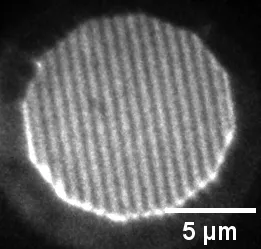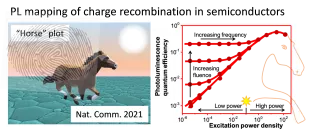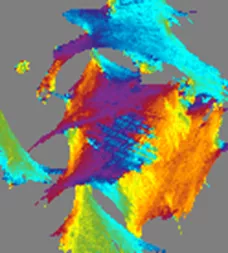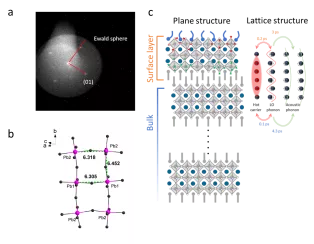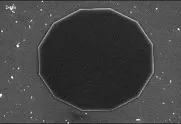Probing excitations and charges in nanomaterials using photons
Research areas:
- Spatially and temporally resolved studies of charge carriers in semiconductors and metal.
- Micro photoluminescene studies of semiconductors and biological samples
- Hot carrier cooling in perovskite nanostructures
- Terahertz Materials Analysis
- Quantum dynamics of matter-light interaction
- Quantum optical properties of nanostructures
Spatially and temporally resolved studies of charge carriers in semiconductors and metal.
We use time-resolve photoemission electron microscopy (TR-PEEM), where fs time resolution is provided by fs pulses and spatial resolution is provided by PEEM to investigate charge carrier dynamics in semiconductor and plasmonic nanomaterials.
Key publications:
- L. Wittenbecher et al., Unraveling the ultrafast hot electron dynamics in semiconductor nanowires. ACS Nano, 15 (1), 1133–1144 (2021).
- J. Vogelsang et al., Coherent Excitation and Control of Plasmons on Gold Using Two-Dimensional Transition Metal Dichalcogenides, ACS Photonics 2021, 8, 6, 1607–1615.
Project: Charge carier relaxation dynamics and diffusion on wurtzite InP platelets
We developed a new method, where we use two crossed femtosecond laser pulses to induce transient grating of charge carriers, in this case in InP. Then we follow charge carrier energy dissipation dynamics, as well as diffusion of the carriers at the material surface. The combination of time and spatial resolution allows us for recovering full information on the photoexcited charge carriers on the surface.
Contact persons:
Micro photoluminescene studies of semiconductors and biological samples
Project: Photoluminescence to probe defect and charge dynamics in perovskites and other semiconductors
Metal halide perovskites are semiconductors with metastable defect states which are sensitive to light, current and environment. We apply photoluminescence (PL) microscopy and micro spectroscopy to rationalize the recombination pathways of free charge carriers at the conditions of constantly evolving defect types and concentrations. Defect metastability leads to photoluminescence blinking of individual sub-micrometer crystals and peculiar transient effects in films and perovskite solar cells also known as “self-healing”. We also develop new methods to rationalize the microscopic elementary processes in semiconductor materials and devices, for example, the PL quantum yield scanning resulting in a so-called “Horse” plot.
Contact person:
Key publications:
- M.H.J.J. Galle, et al, Self‐Healing Ability of Perovskites Observed via Photoluminescence Response on Nanoscale Local Forces and Mechanical Damage, Advanced Science (2023) 2204393
- A. Kiligaridis, et al, Are Shockley-Read-Hall and ABC models valid for lead halide perovskites?” Nat. Commun. 12 (2021) 1-13
Project: Polarized luminescence microscopy for material science and biology
Polarization of photoluminescence can be used as a tool to understand processes of light absorption, emission, energy transfer and geometric characteristics of nanostructured systems from semiconductors to biological structures. Over the years we develop a unique fluorescence microscopy method called 2D POLIM allowing for a complete set of polarization measurements of individual particles and bulk samples and imaging where polarization parameters are used as imaging contrasts.
Contact person:
Key publication:
- R. Camacho, Fluorescence anisotropy reloaded – emerging polarization microscopy methods for assessing chromophores’ organization and excitation energy transfer in single molecules, particles, films and beyond Advanced Materials 31 (2019) 1805671
Hot carrier cooling in perovskite nanostructures
Hot carrier solar cell is an attractive concept, still, not even a proof-of-the-principle prototype exists. A more basic understanding is necessary. Therefore, we have studied hot carrier cooling in nanoscale 2D perovskite films via transient absorption and photo-electron pump-probe spectroscopy. The results are formulated in terms of carrier cooling, hot phonon bottleneck and softening of the upper layer of the 2D perovskite single crystal.
Contact person:
Key publications:
- J. Chen, et al. Cation Dependent Hot Carrier Cooling in Halide Perovskite Nanocrystals. JACS 2019, 141, 3532-3540
- W. Lin, Combining Two-Photon Photoemission and Transient Absorption Spectroscopy to Resolve Hot Carrier Cooling in 2D Perovskite Single Crystals: the Effect of Surface Layer. J. Mat. Chem. C 2022, 10, 16751-16760.
Terahertz Materials Analysis
In the Terahertz Materials Analysis Center (THeMAC), which is an open and e-access national research infrastructure we characterize transport, spin and electronic properties of semiconductor-, nanostructured- and bio-materials and devices. THeMAC features far-infrared to terahertz frequency-domain generalized spectroscopic ellipsometry and optical Hall effect instrumentation, which are unique in Europe and the world-unique terahertz electron paramagnetic resonance ellipsometer.
Contact person:
Key publications:
- M. Schubert, Terahertz electron paramagnetic resonance generalized spectroscopic ellipsometry: The magnetic response of the nitrogen defect in 4H-SiC, Appl. Phys. Lett. 120, 102101 (2022).
- P. Kühne, Advanced frequency-domain terahertz ellipsometry instrumentation for in-situ and ex-situ applications, IEEE Transactions on Terahertz Science and Technology 8, 257 (2018), Invited paper
Quantum dynamics of matter-light interaction
Quantum kinetic approaches are used to simulate the interaction of quantum systems with short light pulses. This provides a direct description of two-dimensional spectroscopy as performed at the division of chemical physics. Ongoing work investigates the relevance of pulse-overlap for the detection of the double coherent signal. On a more fundamental basis, the applicability of different approaches in this conceptually and numerically demanding situation shall be addressed.
Contact person:
Key publication:
- F.A. Damtie, Two-dimensional action spectroscopy of excitonic systems: Explicit simulation using a phase-modulation technique, Physical Review A 96, 053830 (2017).
Quantum optical properties of nanostructures
We investigate heterostructures where the quantum properties dominate. These quantum properties are investigated both optically and using realistic three-dimensional calculations. Quantum dots figure prominently. Theoretically, we often use deep learning and exact mathematics in addition to standard techniques.
We investigate nanostructures with respect to their quantum properties using optical and theoretical methods.
Contact persons:


